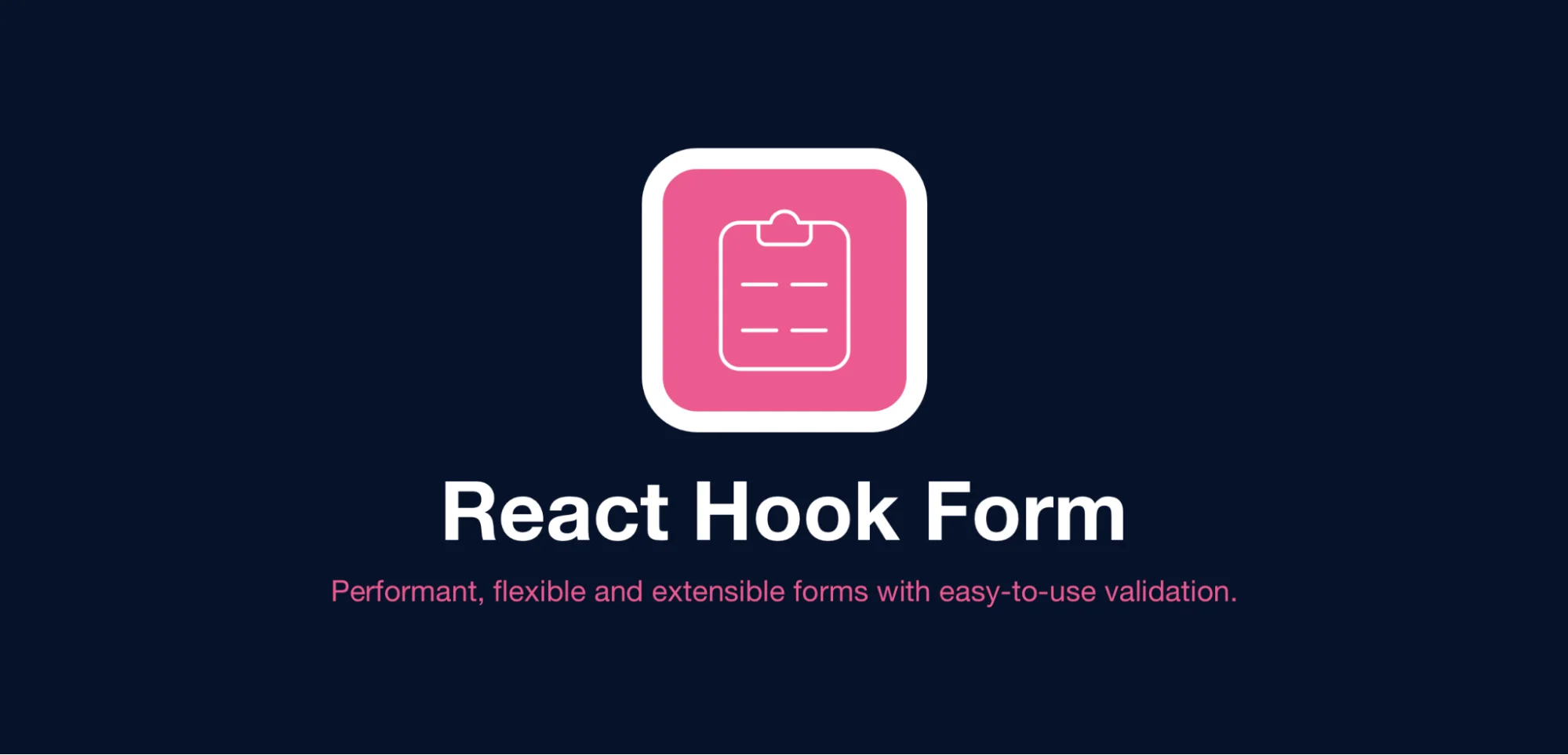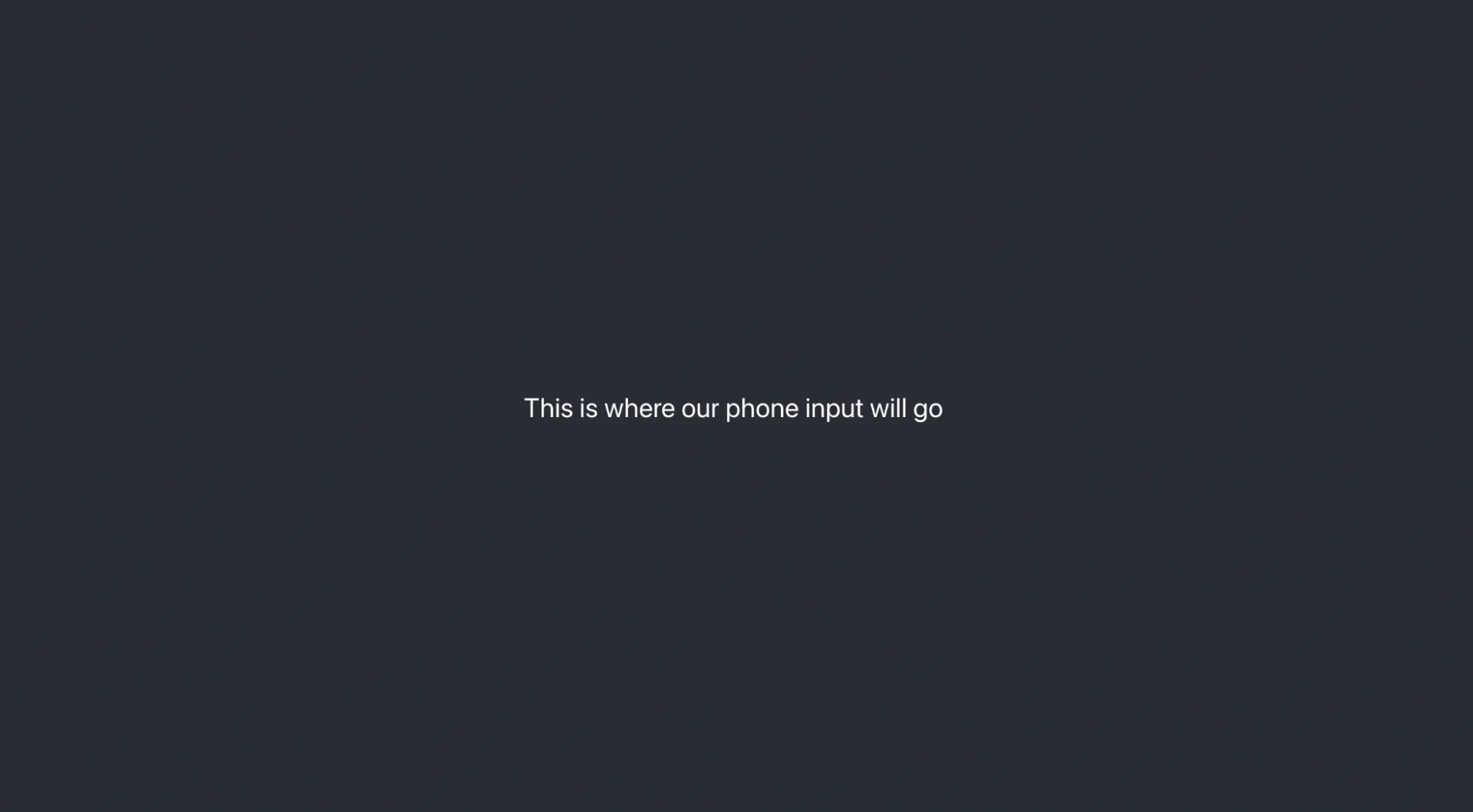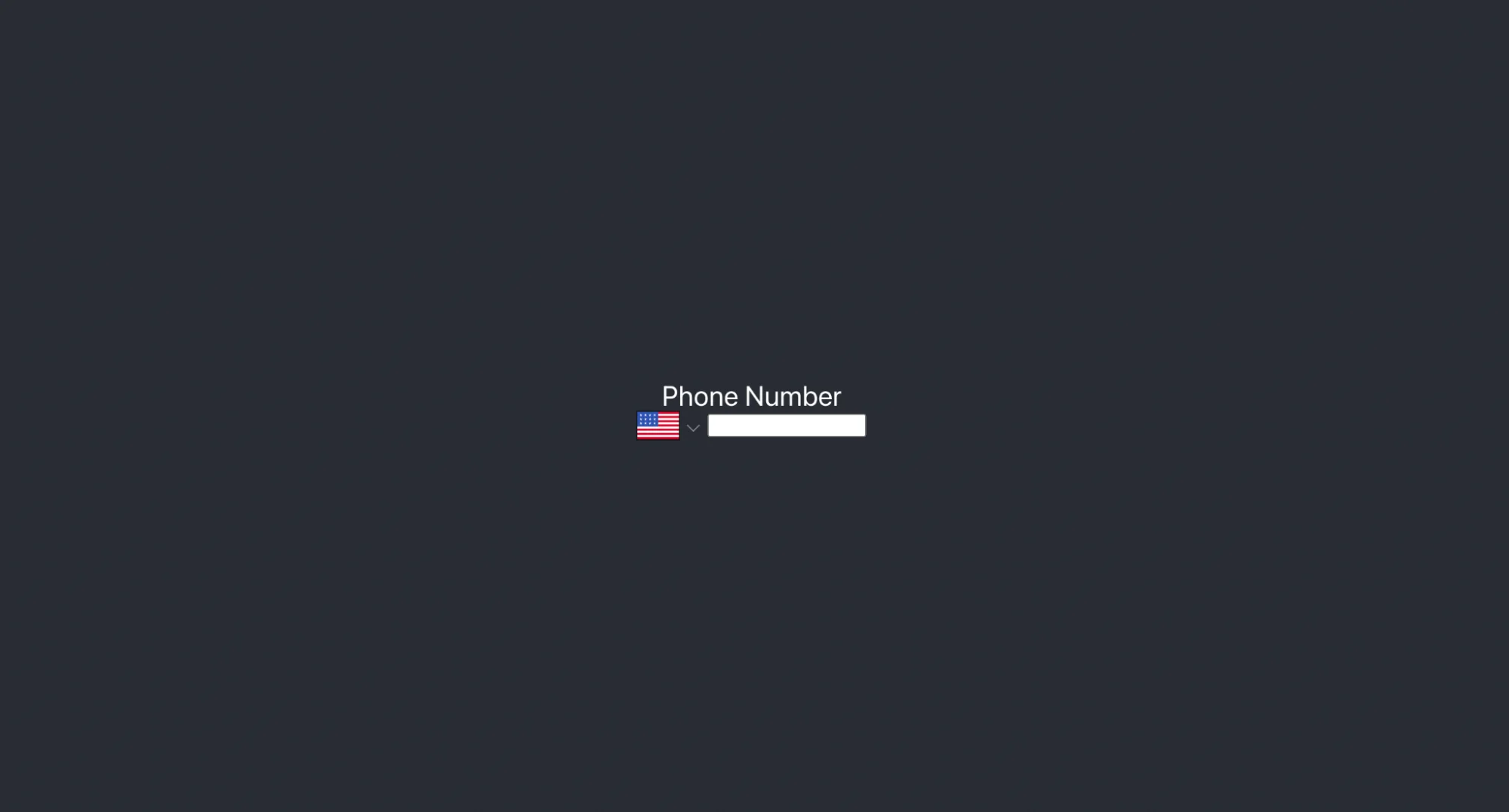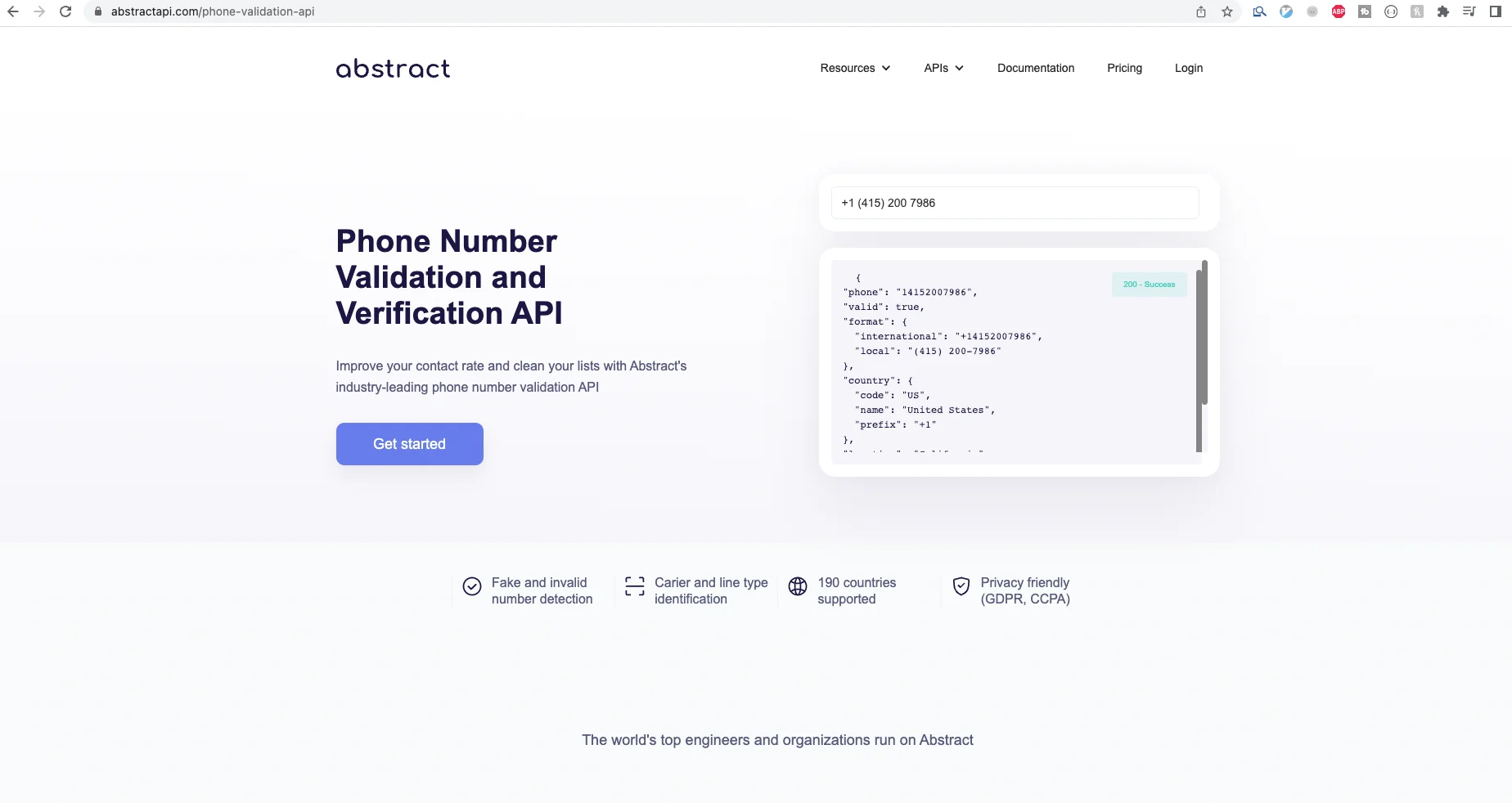How to Validate a Phone Number Using Regex Step by Step
We’re going to use react-phone-number-input, an NPM package that provides out-of-the-box components for phone number inputs, along with some handy methods for phone number validation.
We’ll also use React Hook Form, a library that uses React Hooks to make building forms and managing form state easy.

Create a React app and Install Dependencies
We’ll assume that you already have a basic understanding of React and Create React App. If you don't, check out this tutorial on React, and this information on Create React App before proceeding.
To spin up a new app using Create React App
Install react-phone-number-input and react-hook-form.
And start the app
This will open a new browser window with the app running at http://localhost:3000.
Build the Input
Inside src create a new file called regex-phone-number-input.js and import your dependencies. Create a React Component called RegexPhoneNumberInput and for now, just render some text.
Remove the boilerplate between the two <header>s in App.js, import your new RegexPhoneNumberInput and render it instead.
Check out your browser window at http localhost 3000. You should now see something like this:

That’s all we need to scaffold our app. Now let’s build the input.
Add the Input Component
Inside the RegexPhoneNumberInput, add the React Hook Form wrapper using the components and handlers that React Hook Form provides. Use the onSubmit method to mock out a function that submits the data. For now, just log it to the console.
The useFormReact hook gives us a handleSubmit function, which must be passed to the onSubmit handler of the <form> element, and it will be called when the user submits the form. We pass our custom onSubmit function as an argument to handleSubmit.
Delete the <div> with the text and add the form element, a <label> and the React Hook form <Controller>
Notice that we name our controller “phone-input” (this will be important when we handle errors.) We pass the control prop from the useForm hook to the <Controller>
We’ve now set up the React Hook Form logic that helps us handle the form state. The render field on the <Controller> is where the actual phone input will be rendered. Let’s add that now using react-phone-number-input.
The render field takes a function that returns a child component. The function accepts one argument, the field object, which passes to the child component an onChange handler and the field’s value.
This takes a lot of the state management out of rendering the form. React Hook Form takes care of updating the state of the form, so we don’t have to write our own initial value, use setState, or write an onChange handler.
The component we’re returning is the react-phone-number-input PhoneInput component. Let’s check out our phone number app in the browser again.

We’re now rendering a complete phone number input. We just need to add our Regex validation.
Add validation logic
React Hook Form makes validation easy. We can use the rules field of the <Controller> component to run our validation function. We could also use the isValidPhoneNumber method provided by react-phone-number-input to validate the number, however, for the sake of this tutorial, we’ll write our own customer Regex validator.
Here’s the Regex we’ll be using to validate the string.
For a thorough breakdown of how this Regex works, click here. This will match phone numbers input in the following formats:
Create a new Regular Expression using this string. Make it global, case insensitive, and multiline.
Create a handleValidate method that accepts a phone number and uses the Regex.test() method to check for a positive match against the provided string.
Now, we can just pass this custom validation function to our rules field on the <Controller>. React Hook Form will handle calling the validation function for us whenever the user updates the input.
Handle Errors
Now, we just need to show the user an error when they enter an invalid phone number. Luckily, React Hook Form makes this super easy as well. React Hook Form will catch any errors that arise from running the validation function we gave it.
React Hook Form gives us access to an errors object in the useForm hook. We can use that to track our errors and render a message if one exists.
Put It All Together
Here’s the full code for our phone number input component.
Additional Idea: Validation Through a Dedicated Library
While RegEx can work for simple cases, a much better idea is to use a validation library or a dedicated phone number validation API. For instance, Yup is a popular JavaScript schema builder excellent for handling complex form validations. We have a complete guide on Yup phone number validation if you prefer a library-based approach. With these tools, the nitty-gritty of parsing, cleaning, and comparing a string of numbers is put on the library or API. All you have to do is collect the user’s number and pass it off to the validator.
A great API for this is AbstractAPI’s free phone number validator. You can send any phone number to the API’s REST endpoint and get back a JSON object with a validation boolean and additional information about the number.
The object that AbstractAPI returns look like this:
Let’s rewrite our handleValidate method to use the AbstractAPI phone validation endpoint instead of the Regex.
Acquire an API key
You’ll need an API key to use the AbstractAPI endpoint. Navigate to the API documentation page. You’ll see an example of the API’s JSON response object to the right, and a “Get Started” button to the left.

Click “Get Started.” You’ll be asked to create an account using your email and a password. If you already have an AbstractAPI account, you’ll be asked to log in.
Every AbstractAPI API needs a unique key, so if you have an existing API key from a different API, you’ll be given a new one for this API. You’ll land on the API homepage.

Rewrite the Validation Using the API
We’ll first write a function that uses fetch to send a GET request to the API endpoint, with our API key and the phone number for validation.
We could call out sendValidationRequest method inside our handleValidate function instead of using the Regex validator. However, React Hook will call this validation function on every keystroke, meaning we’d be sending an AJAX request to the endpoint on every keystroke, and we’d quickly hit a 429 “Too many requests” error.
Instead, we’ll move the validation logic to the onSubmit function.
We had to turn our onSubmit into an async function since we’re now sending a network request. The data will only be submitted if the API tells us the phone number is valid. Otherwise, we’ll display an error to our users.
We could remove the Regex validation from the form, or leave it in. It doesn’t hurt to have two levels of validation in a user form.



